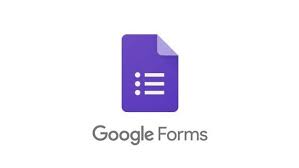INVESTIGATION OF BILINGUALISM COMMUNITIES: LANGUAGE TEACHING AND LEARNING IN BILINGUALISM CLASSROOM
DOI:
https://doi.org/10.31597/sl.v6i2.678Keywords:
Bilingualism, bilingual program, enrichment, transitional programAbstract
The study aims to know the kinds of bilingualism classrooms. The research design of the study was qualitative which focuses on a case study. This study focused on Colin’s theory about the kinds of bilingualism programs, they are bilingual programs, structured immersion, enrichment programs, and transitional programs. The data were obtained by observing the teacher and students in the videos teaching-learning process in bilingualism classroom by making a transcript. The result of the research finding revealed that there are only three kinds of bilingualism program of videos, the first bilingual program, second enrichment program, and the third transitional program.
References
Hamers, J.F, and Michael H.A Blanc. Dimensions and Measurements of Bilingualityand Bilingualism.2nd Edition. United Kingdom: Cambridge University Press, 2000
Sipra, Muhammad Aslan. "Contribution of Bilingualism in Language Teaching." English Language Teaching, 2013: 3.
Sipra, Muhammad Aslan. "Contribution of Bilingualism in Language Teaching." English Language Teaching, 2013: 3.
Marlina, Leni. "Bilingualism and Bilingual Experience a Case of Two Southeas Asian Female Student at Deakin University." 2012: 2-3
Coulmas, Florian. The Handbook of Sociolinguistics. Los Angeles: Blackwel Publishing, 2007
Colin, Baker. Foundation of Bilingual Education and Bilingualism. Sydney: British Library, 2001.
Hamers, J.F, and Michael H.A Blanc. Dimensions and Measurements of Bilingualityand Bilingualism.2nd Edition. United Kingdom: Cambridge University Press, 2000
Lichtman, Marulyn. Qualitative Research in Education a User's Guide (Third Edition). Loas Angeles: Sage Publication, Inc., 2013
Marriam, S. Qualitative research and case study application in education (2nd edition). Francisco: Jossey-Bass Inc, 1998.
Downloads
Published
How to Cite
Issue
Section
License
1. Copyright of this journal is possession of Editorial Board and Journal Manager, by the knowledge of author, whilst the moral right of the publication belongs to the author.
2. Legal formal aspect of journal publication accessibility refers to Creative Commons Atribution-ShareAlike (CC BY-SA), implies that this license lets others remix, adapt, and build upon your work even for commercial purposes, as long as they credit you and license their new creations under the identical terms. This license is often compared to “copyleft” free and open source software licenses.
3. Every publications (printed/electronic) are open access for educational purposes, research, and library. Other that the aims mentioned above, editorial board is not responsible for copyright violation















